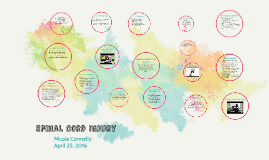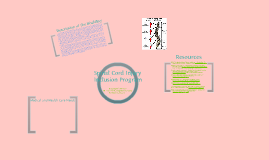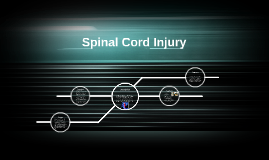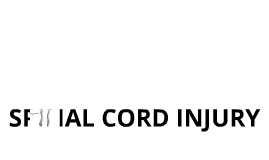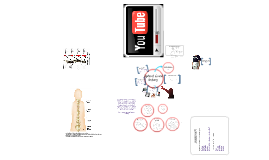Spinal Cord Injury
Transcript: (Atchison & Dirette, 2012) Levels (Quadripeliga Motor vehicle accidents: Leading cause of spinal cord injury in the U.S with more than 35 percent of new spinal cord injuries each year. Falls: Cause more than one-quarter of spinal cord injuries. Acts of violence: Around 15 percent of spinal cord injuries result from violent encounters, Including: Gunshot & Knife wounds. Sports injuries: Cause about 9 percent of spinal cord injuries. Alcohol: A factor in about 1 out of every 4 spinal cord injuries. Diseases: Cancer, arthritis, osteoporosis and inflammation of the spinal cord also can cause spinal cord injuries. OT after a Spinal Cord Injury Atchison, B., & Dirette, D. K. (2012). Spinal cord injury. In Conditions in occupational therapy: Effect on occupational performance (4th ed., pp. 257-283). Philadelphia: Wolters Kluwer/Lippincott Williams & Wilkins. ("Levels of Function in Spinal Cord Injury," 2008) Maintain or increase joint ROM Prevent deformity Increase strength of all innervated & partially innervated muscles. Increase physical endurance. Maximize independence in all aspects. Aid in the psychosocial adjustment to disability. Evaluate, recommend, and train the patient in the proper use of adaptive equipment. Ensure safety in the home & environment. (Early,2013) Loss of movement. Loss of sensation, including the ability to feel heat, cold and touch. Loss of bowel or bladder control. Exaggerated reflex activities or spasms. Changes in sexual function, sexual sensitivity and fertility. Pain or an intense stinging sensation caused by damage to the nerve fibers in your spinal cord. Difficulty breathing, coughing or clearing secretions from your lungs. (“Levels of Injury-Understanding Spinal Cord Injury,” 2016) Levels (Parapeligia) Quadriplegia (“Living with a Spinal Cord Injury,” 2015) Thoracic: Innervation & function of all UE muscles, including hand muscles. (Early,2013) Levels of Function (McKinley, 2015) Spinal Cord Injury References Posttraumatic Complications What is Spinal Cord Injury? Decubitus Ulcers Decreased Vital Capacity Osteoporosis Orthostatic Hypotension Autonomic Dysreflexia Spasticity Heterotopic Ossification S. (2016). Levels of injury - understanding spinal cord injury. Retrieved March 28, 2016, from http://www.spinalinjury101.org/details/levels-of-injury Complete vs. Incomplete High Cervical Nerves ( C1-C4) Arms, hands, trunk & legs are affected. Most severe of the spinal cord injury levels. Patients may not be able to breath on their own, cough, or control bowel or bladder movements. Reduced or impaired ability to speak. Also known as Tetraplegia. Requires complete assistance with ADLs. May be able to use a power chair with special controls to move around on their own. C8: Functional finger flexion. SCI in the United States are estimated at 40 cases a year. (excluding those that are dead at the scene). 12,000 new cases of SCI every year. 80 % of persons who sustain a spinal cord injury are males. Thoracic Nerves (T1-T12) Arm & hand function is usually normal. Usually affect the trunk & legs. Most likely can use a manual wheelchair. Can learn to drive a modified car. Some can stand in a standing frame Others may be able to walk with a brace. ("Spinal Cord Injury", 2014) Signs & Symptoms Paraplegia ("Living with Spinal Cord Injury," 2014) ("Occupational Therapy Practice: Physical Rehabilitation," 2012) Incidence M. (2014, October 08). Spinal cord injury. Retrieved March 28, 2016, from http://www.mayoclinic.org/ diseases-conditions/spinal-cord-injury/basics/definition/con-20023837 Prevalence McKinley, W. (2015, July 27). Functional outcomes per level of spinal cord injury. Retrieved April 13, 2016, from http://emedicine.medscape.com/article/322604-overview#a7 Complications with Spinal Cord Injury Complete: If all sensory function and all ability to control motor function are lost below the spinal cord injury. C1-C4: Little or no movement of upper & lower extremity muscles Damage to any part of the spinal cord or nerves at the end of the spinal canal; often causes permanent changes in strength, sensation and other body functions below the site of the injury. Nicole Connelly April 25, 2016 No way to reverse a spinal cord injury Medications: IV Methylprednisolone: If given within eight hours of the injury it will help by reducing damage to nerve cells and decreasing inflammation near the site of injury. Surgery: To remove fragments of bones, foreign objects, herniated disks or fractured vertebrae that appear to be compressing the spine. Also may be needed to stabilize the spine to prevent future pain or deformity. Experimental Treatments: Scientists are trying to figure out ways to stop cell death, control inflammation and promote nerve regeneration. (“Levels of Injury-Understanding Spinal Cord Injury,” 2016) Quadriplegia and quadriplegic. (2015). Retrieved March 28, 2016, from http://www.apparelyzed.com/quadriplegia-quadriplegic.html OT & Spinal Cord Injury (“Levels of Injury-Understanding







